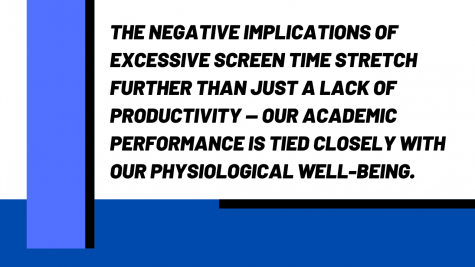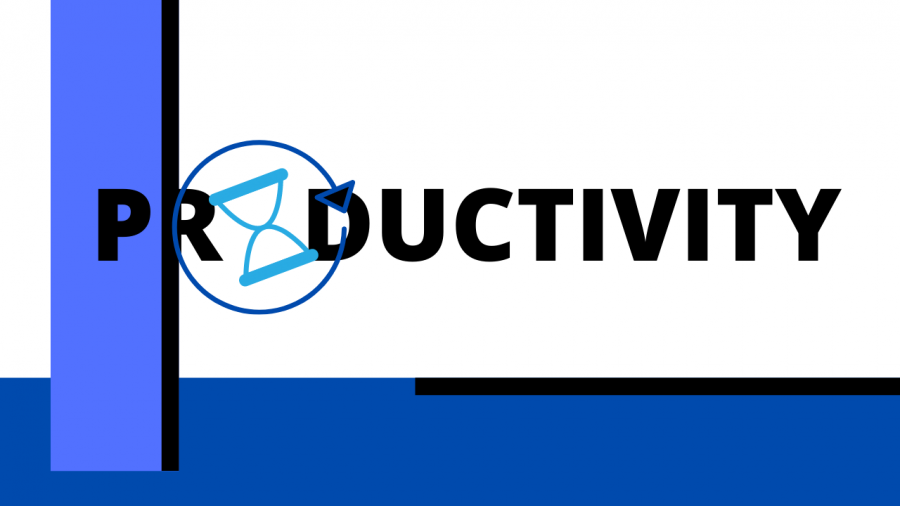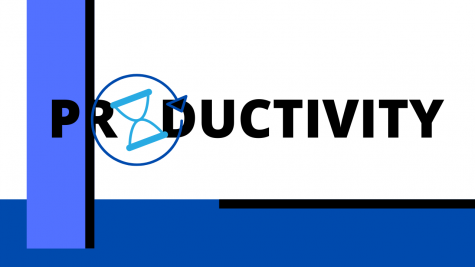Productivity during online distance learning
How to fight lower levels of productivity due to Zoom fatigue
Online distance learning, more aptly nicknamed Zoom school, has resulted in a unique set of problems — the unreliable Wifi, the awkward breakout rooms and the influx of emails. Yet, Zoom school has also exacerbated perhaps the most universal student problem there is — we can’t get things done.
And to add on to this inability to get things done, these things — work-related tasks such as turning in homework, asking questions, sending emails, staying organized — take twice as long to accomplish, rendering us in an unfortunate dilemma: we have more work, yet we are less productive.
To start off, there’s less one-on-one time with teachers. Therefore, almost all communication, even simple questions, must be conducted over email. This creates more work for both parties, and also leads to overflowing mailboxes for everyone. Different teachers choose to do deadlines in different ways — some deadlines are at 11:59 p.m., others are before class, and just to make things interesting, some are at 9:07 p.m. — making it an organizational nightmare (but maybe a logic puzzle if we’re looking for silver linings). Now, math homework doesn’t just require that you do (or attempt) it and shove it into your backpack; there’s an added step of taking pictures and uploading them online. Granted, taking photos is not a high-effort task, but little things add up.

Also, there’s no longer a change in setting between different tasks. Instead of spending half the day at school working and coming home to continue working, the working (or the lack thereof) is all taking place at home. Sitting in the same chair for hours on end can be exhausting — at school, the passing periods and different classrooms helped refocus our minds. Brunches and lunches spent with friends were rejuvenating, and free periods also offered an opportunity to change settings and relax or study at the library or the student union. We still have 15-minute breaks to simulate a passing period, but let’s be real, the only moving anyone is doing is shifting from our desks to our beds.
Not only that, but our screen times have increased, and in most cases, practically doubled. According to a Workplace Wellness Advocate, Zoom fatigue can lead to physical strain including migraines, backaches, eye strain and sleep issues. The negative implications of excessive screen time stretch further than just a lack of productivity — our academic performance is tied closely with our physiological well-being.
Zoom school has taken over our computers and to an extent, our lives. Yet, there are some steps we can take to minimize its detriments and maximize our productivity.

As simple as it sounds, take breaks during those 15-minute passing periods and beyond. Make sure these breaks don’t include checking social media and watching TV, but rather making yourself snacks or going on walks or perhaps aimlessly pacing your room. Walks (supplemented with some calm music or even just the sound of nature around you) are especially helpful if they’re scheduled as a part of “active time” right after school ends. Stretching after sitting on your chair for a long time is always a good idea, and speaking of chairs, maybe even consider investing in an ergonomic one, due to their physiological benefits. As for sleeping, set a time to turn off your devices at least 30 minutes before bedtime to decrease melatonin, a sleep-regulating hormone, disruptions.
When faced with daunting tasks and an overflowing to-do list, an unproductive day can induce negative thought spirals. A day-to-day productivity strategy can be to list out three (not any more!) main things to get done every single day — if you complete those, you had the perfect day. Try sectioning out times during the day that you consistently dedicate to a specific task — no exceptions. Having a visible countdown or mantra on your homepage, desktop or physical space can help you focus and center yourself.
To spice things up, you can try using productivity timer apps (Pomodoro features cute tomatoes, and Forest, as the name suggests, lets you grow a forest). To allow your mailboxes (and yourself) more breathing room, utilize office hours effectively to get your questions answered more efficiently. Organization is tough, but having all your Zoom links in one place helps, as does physically writing down deadlines (if you still remember how to use writing utensils, that is). To drown out background noise and instead immerse yourself into your tasks, try listening to lofi music.
And lastly, working alone can get lonely, because making faces at yourself on Photobooth can only be entertaining for so long. Therefore, Facetime (or Zoom!) with study buddies while working to simulate working together during tutorials and classes.
Productivity is hard. Zoom school makes it harder. But if this global pandemic has taught us anything, it’s that we are more resilient than we believe — and in the face of schoolwork, there’s no doubt we can figure out how to productively work.





